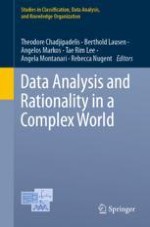2021 | OriginalPaper | Buchkapitel
Estimation of Classification Rules From Partially Classified Data
verfasst von : Geoffrey McLachlan, Daniel Ahfock
Erschienen in: Data Analysis and Rationality in a Complex World
Aktivieren Sie unsere intelligente Suche, um passende Fachinhalte oder Patente zu finden.
Wählen Sie Textabschnitte aus um mit Künstlicher Intelligenz passenden Patente zu finden. powered by
Markieren Sie Textabschnitte, um KI-gestützt weitere passende Inhalte zu finden. powered by
